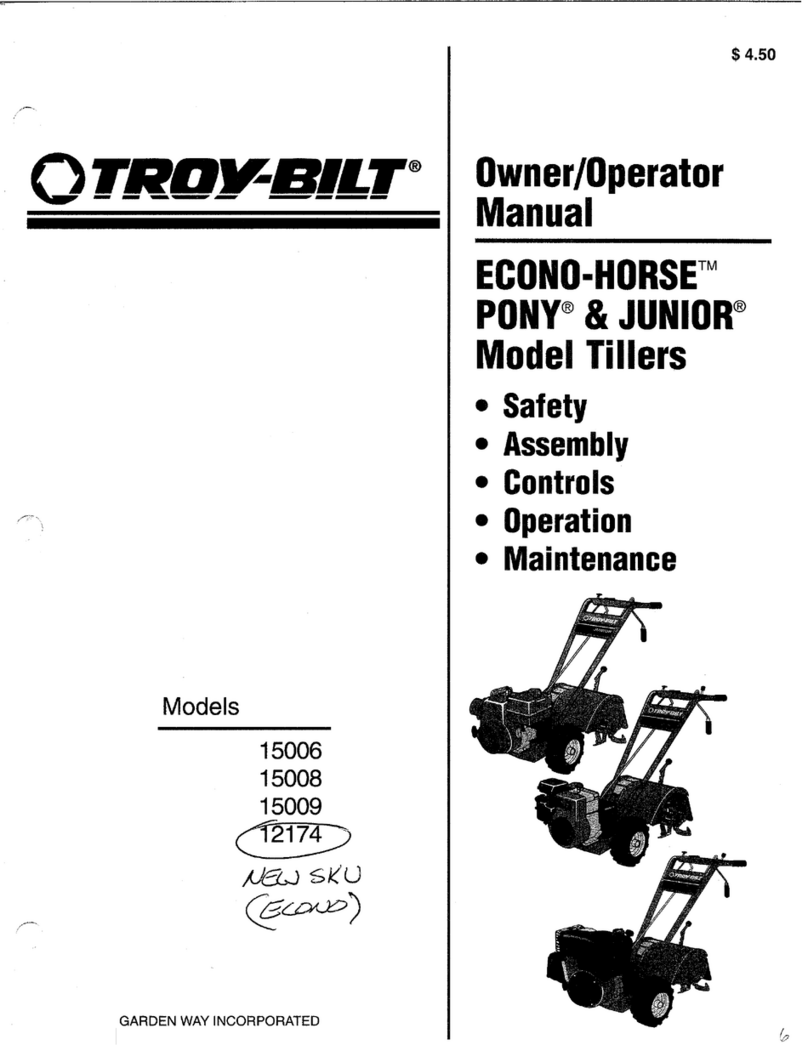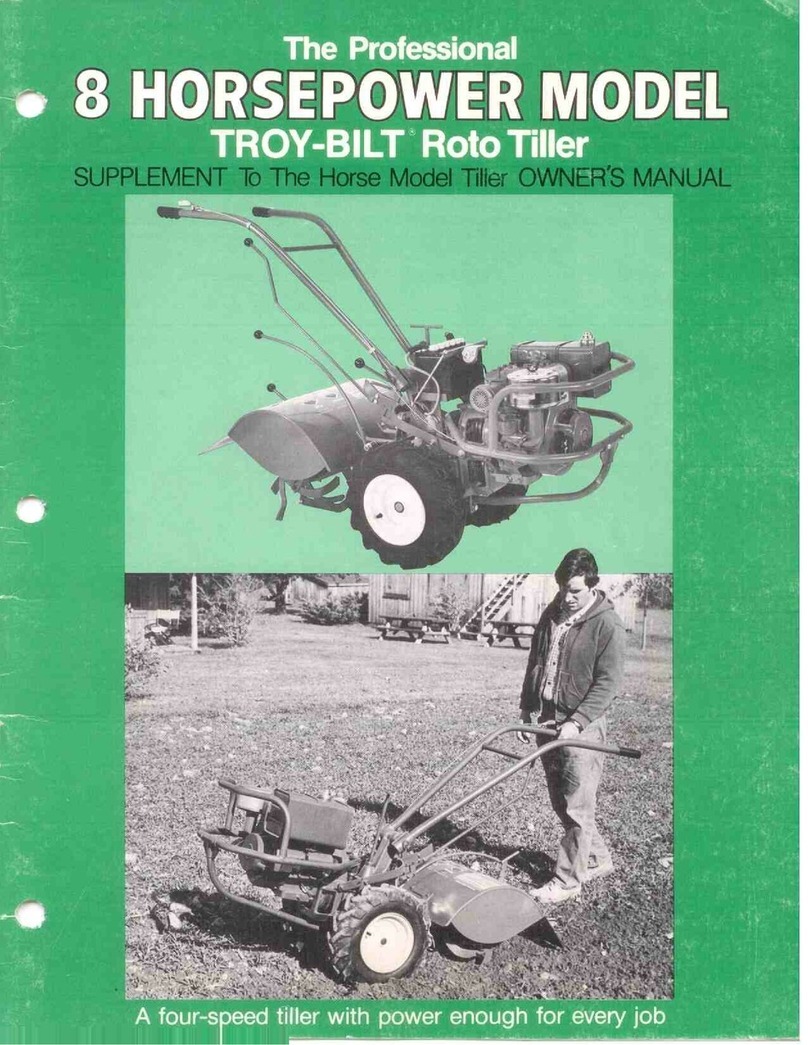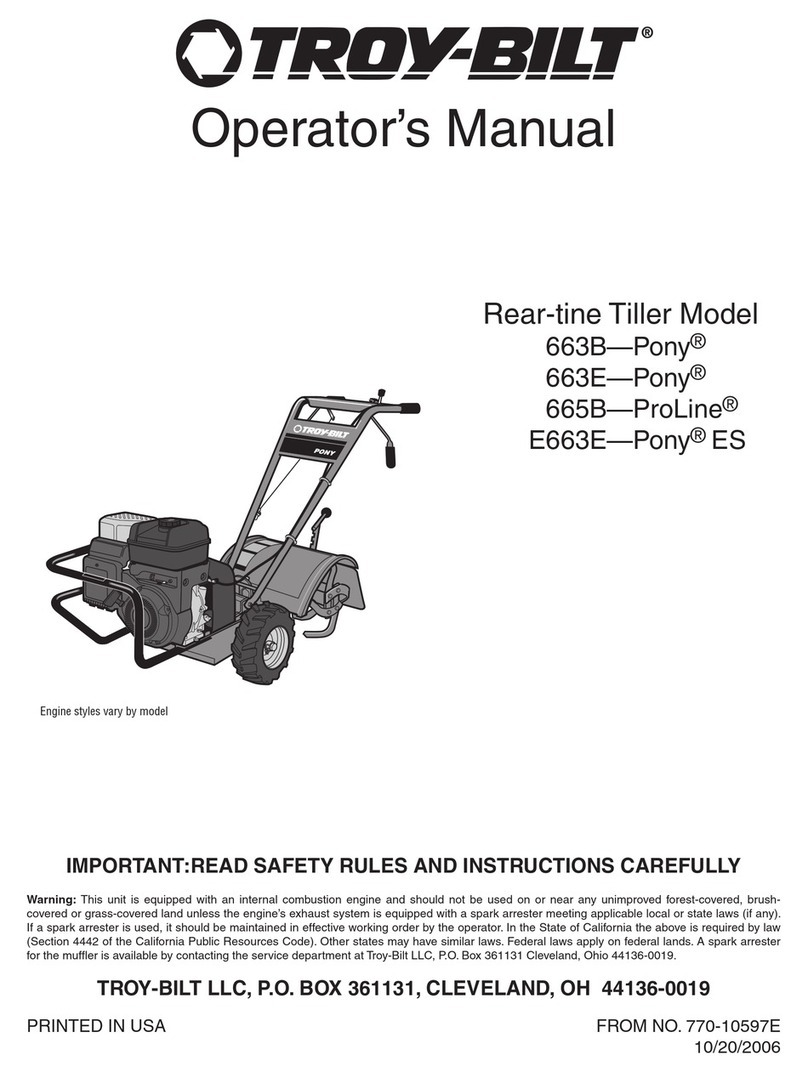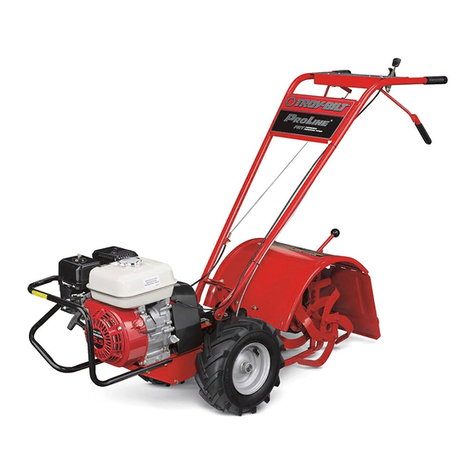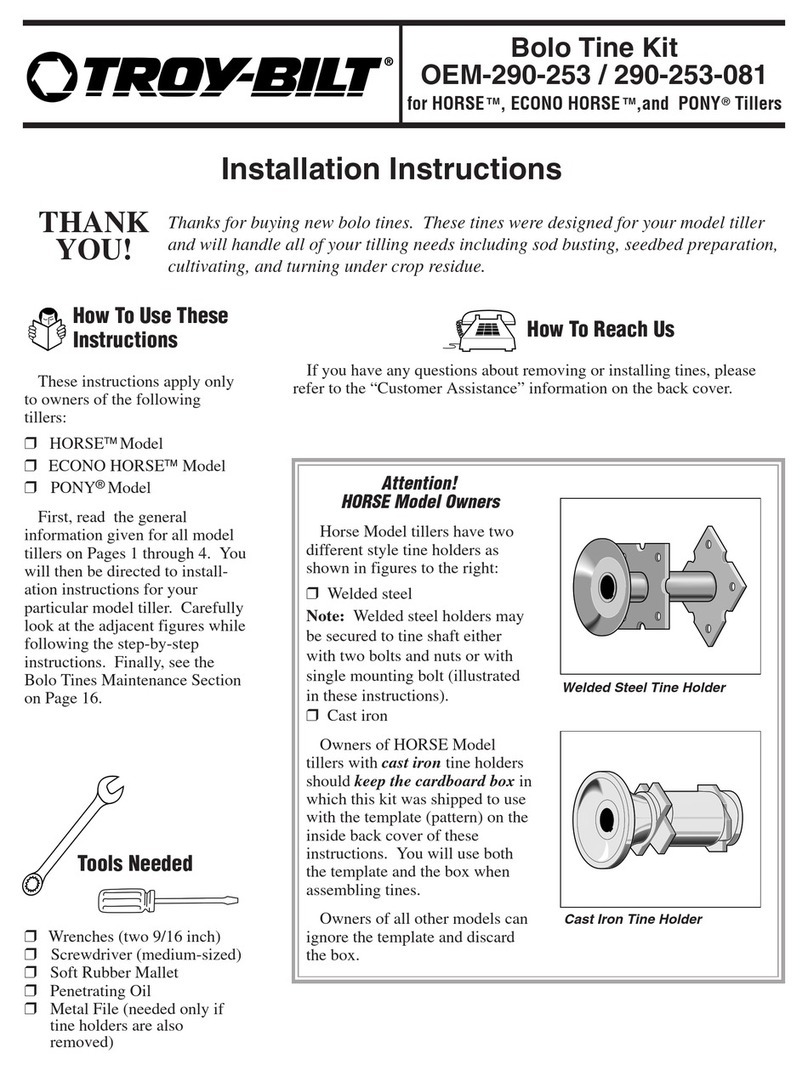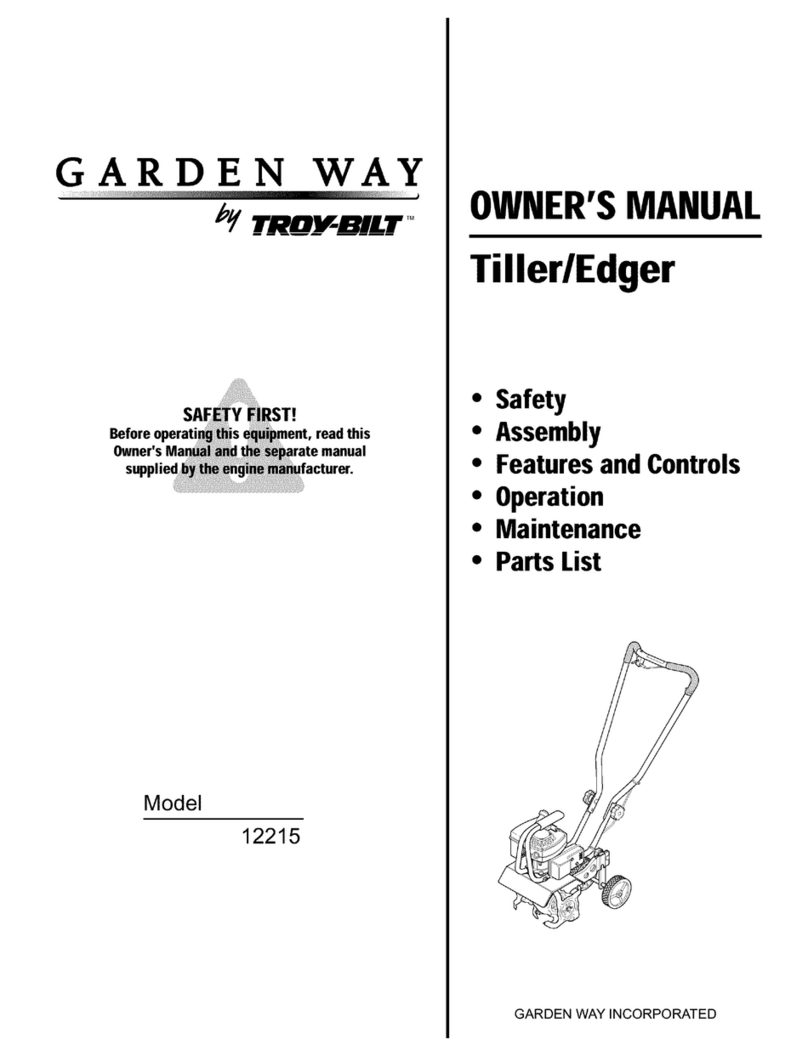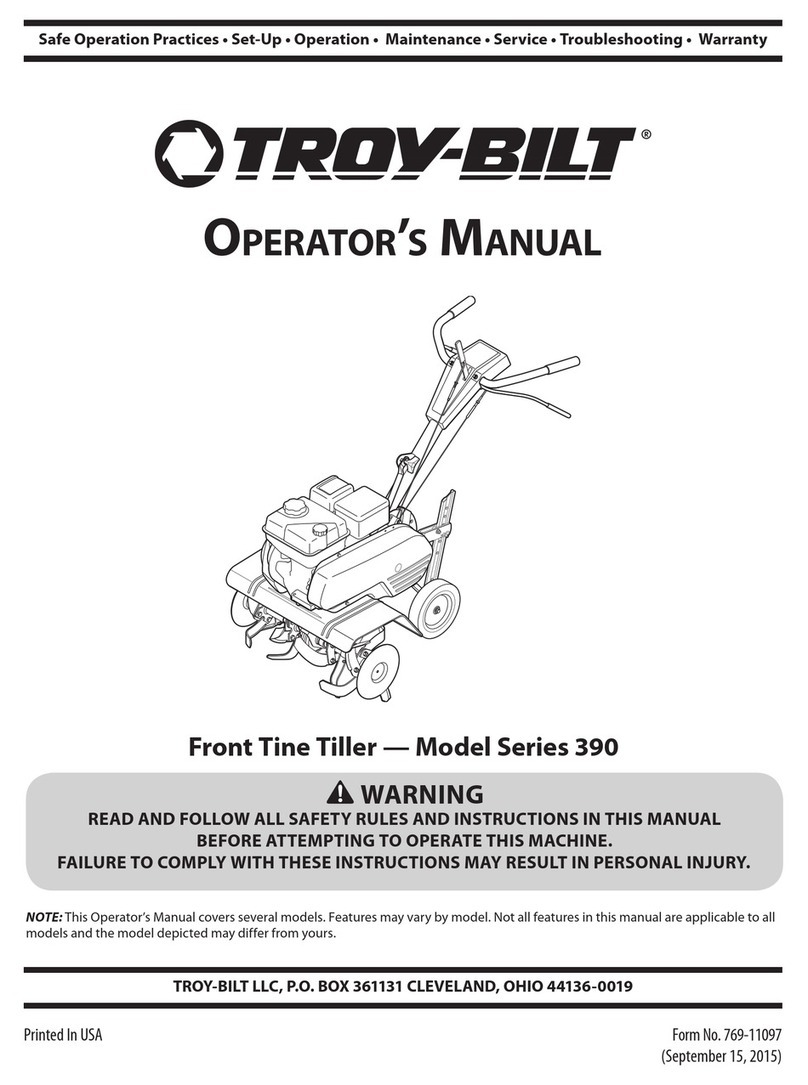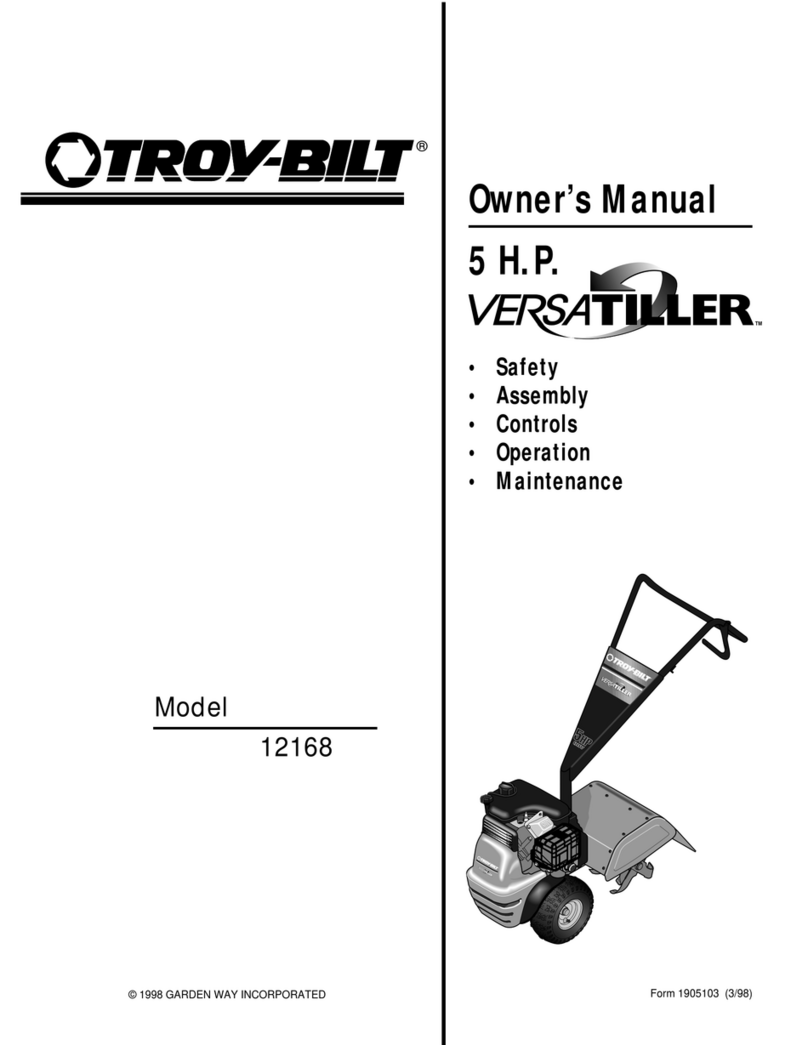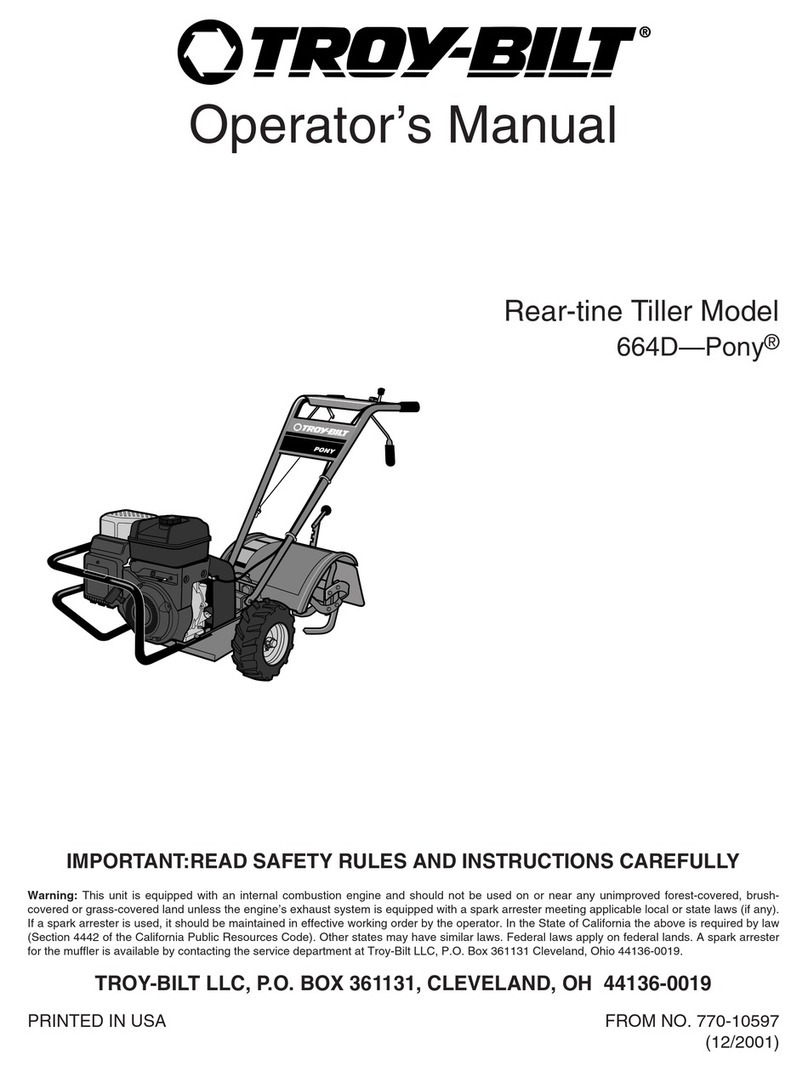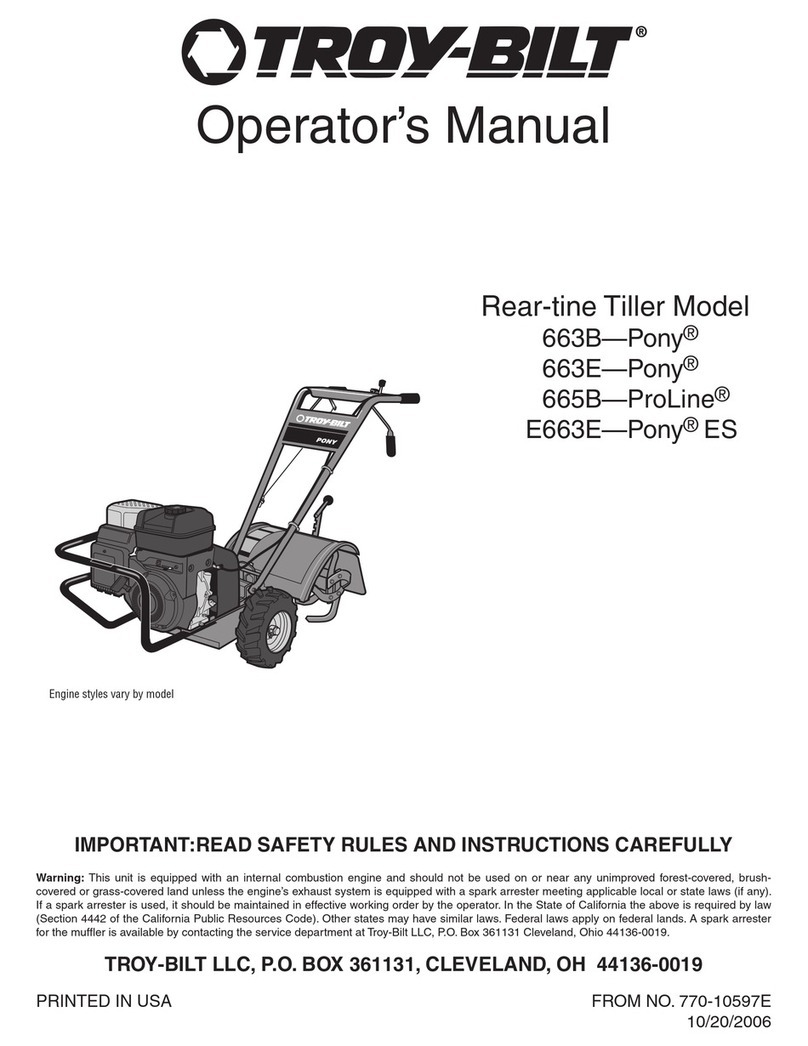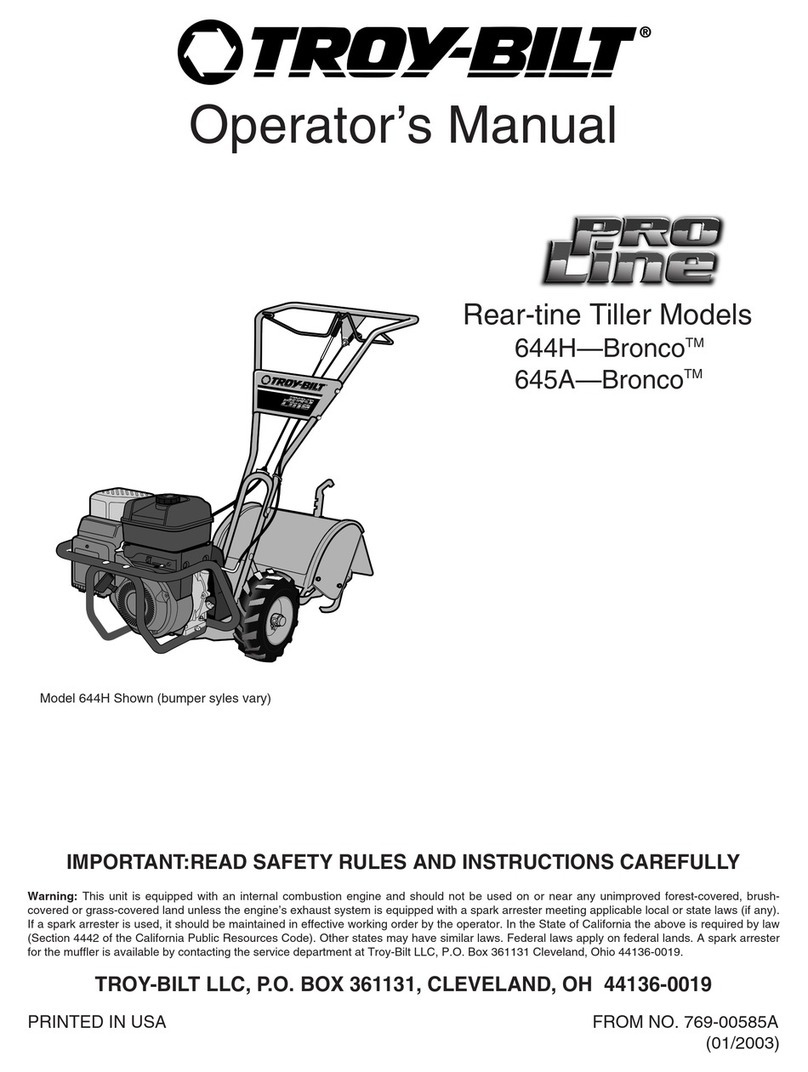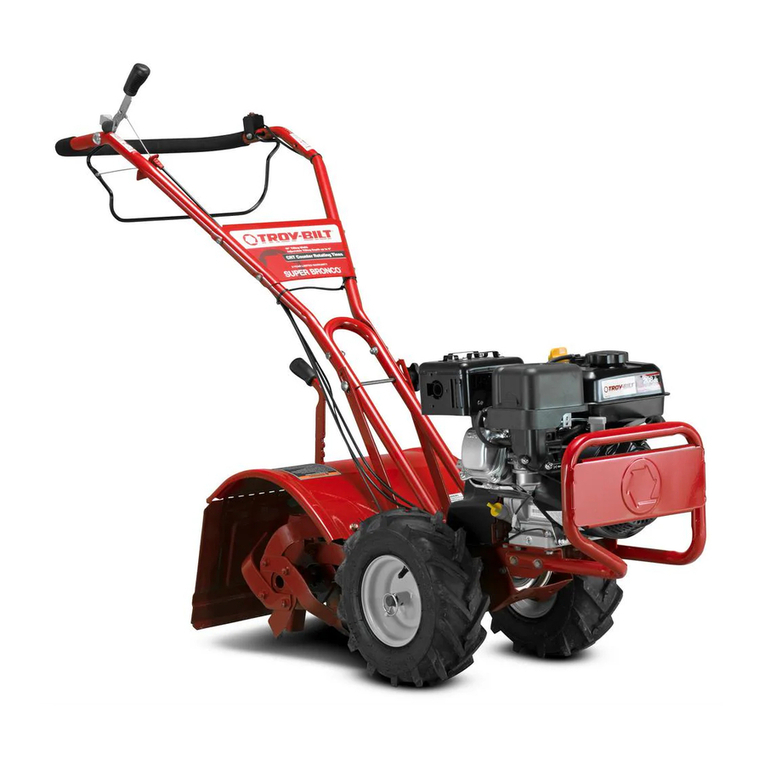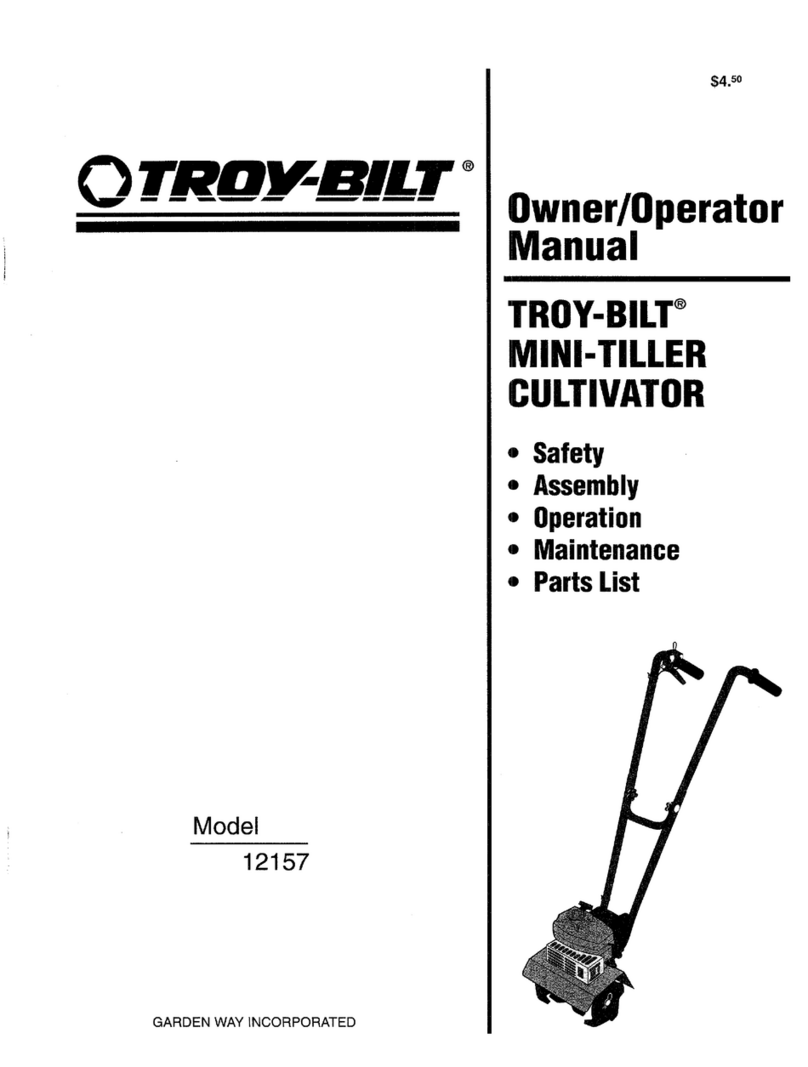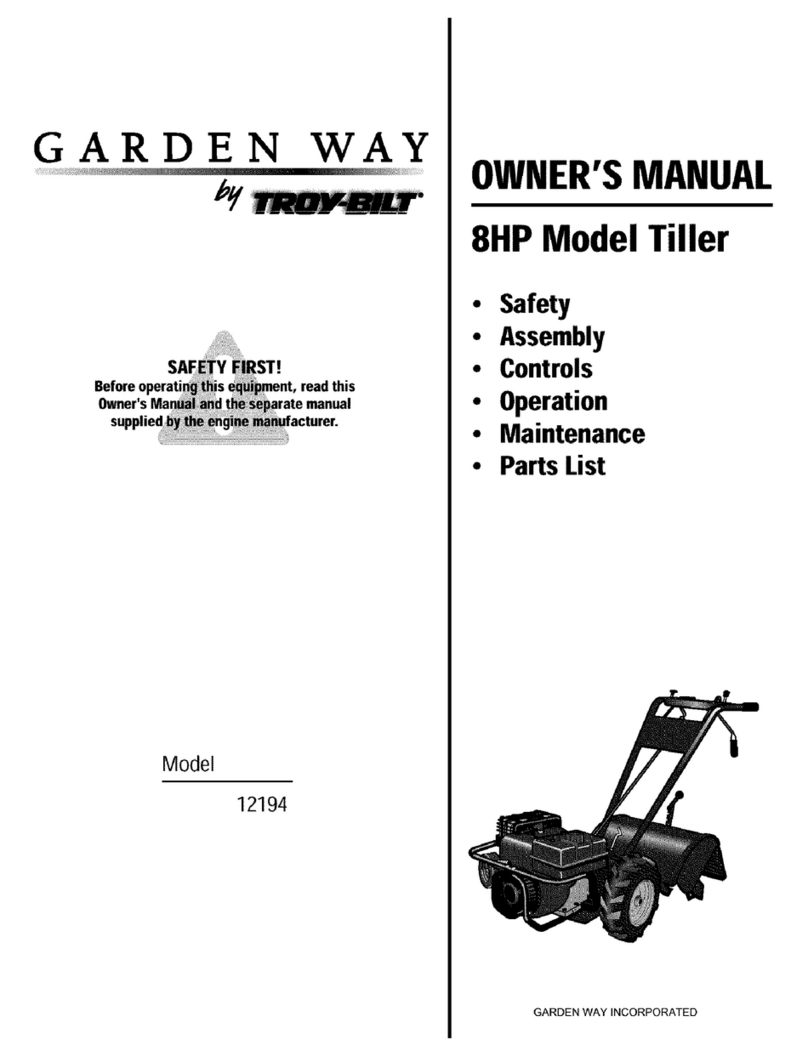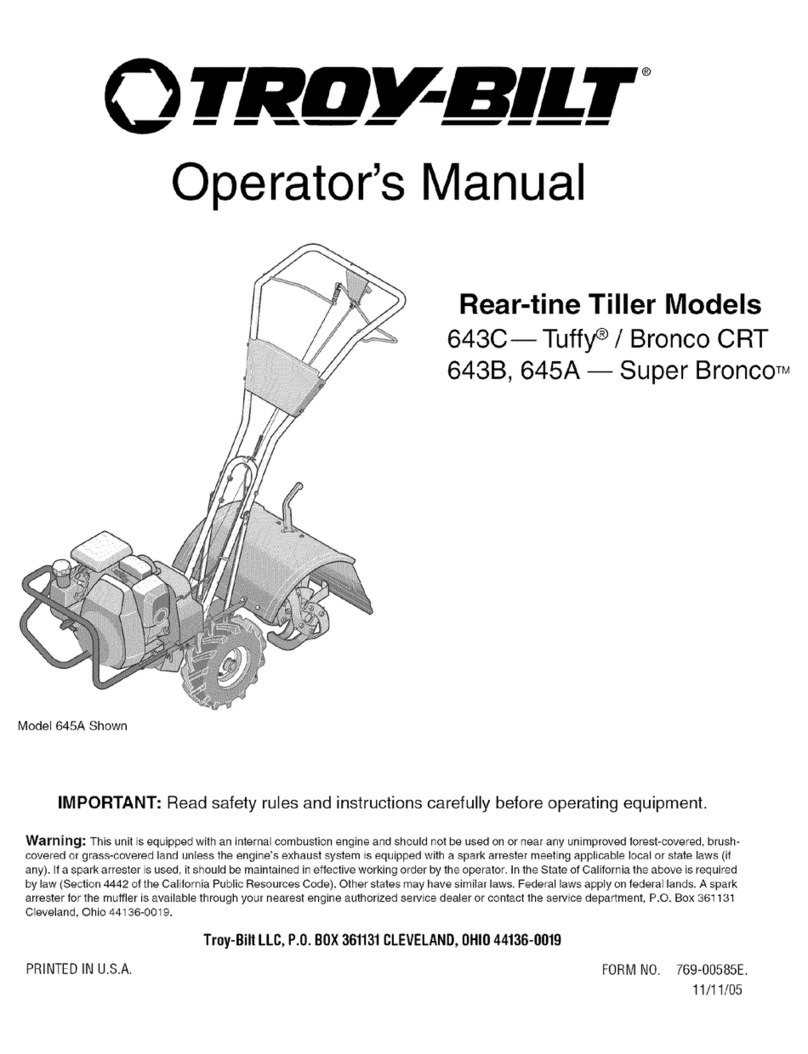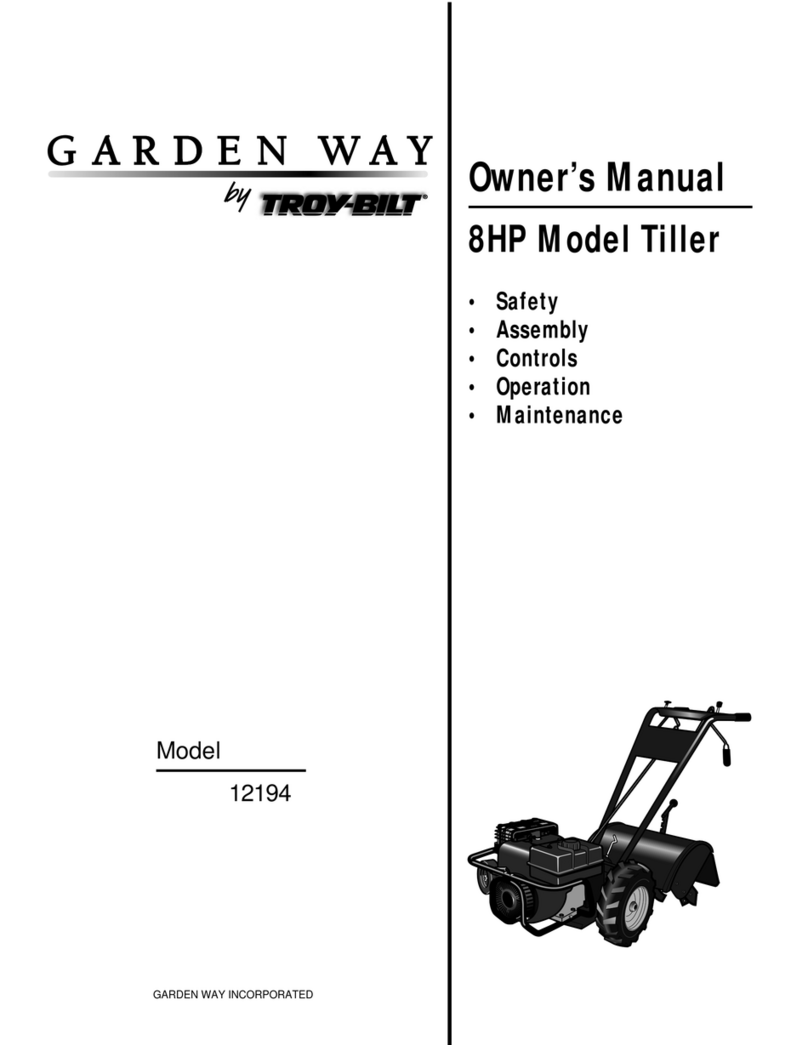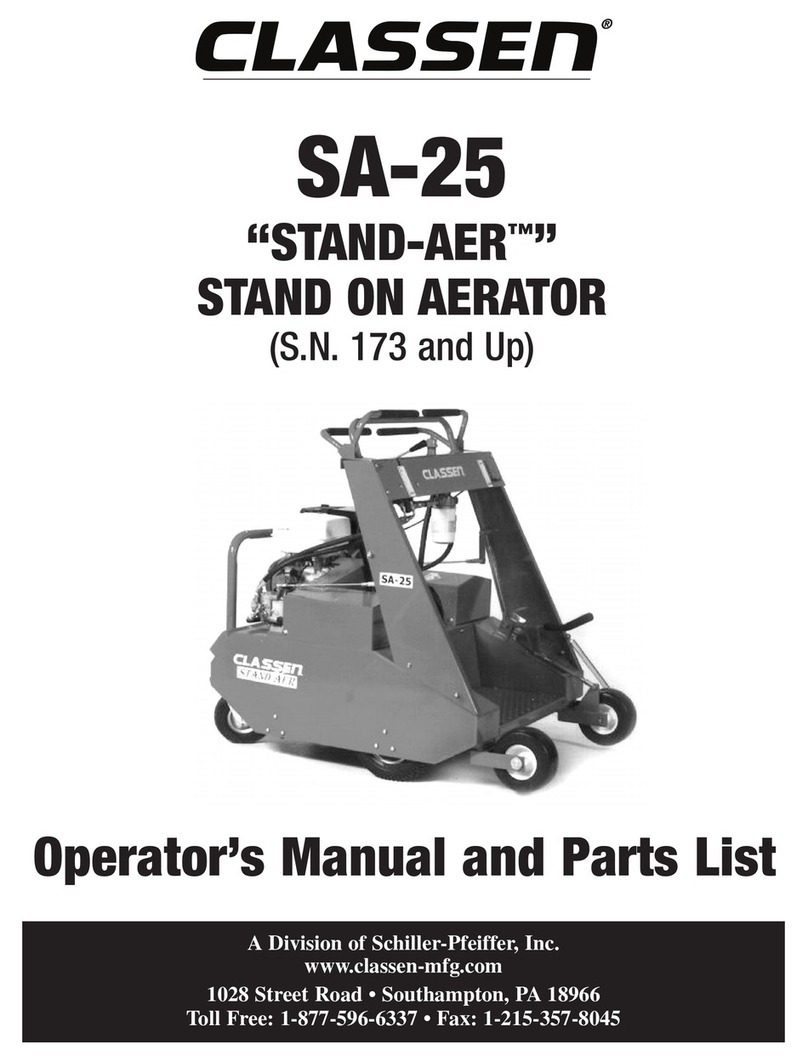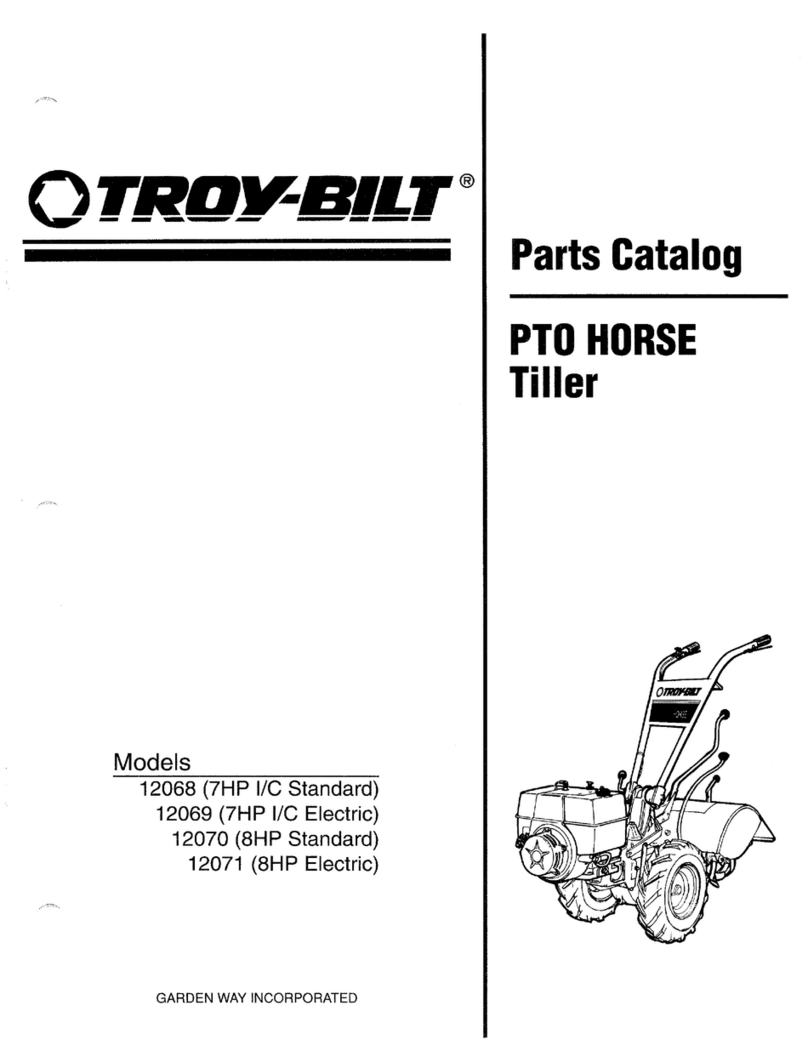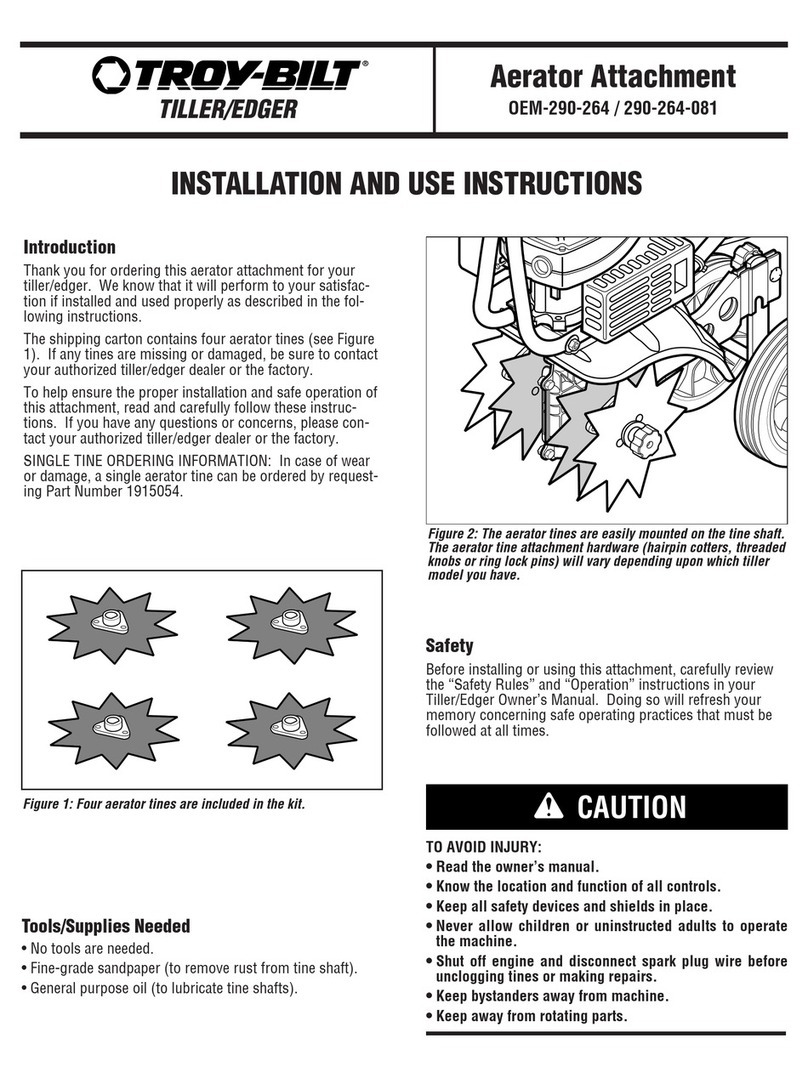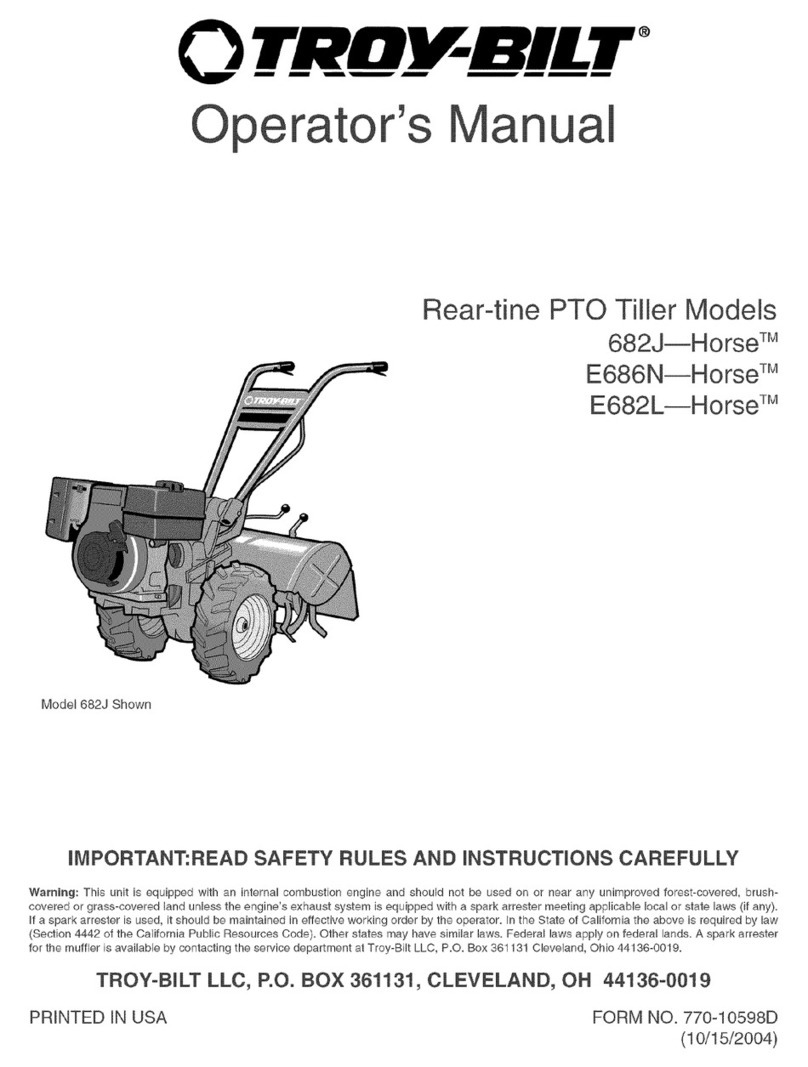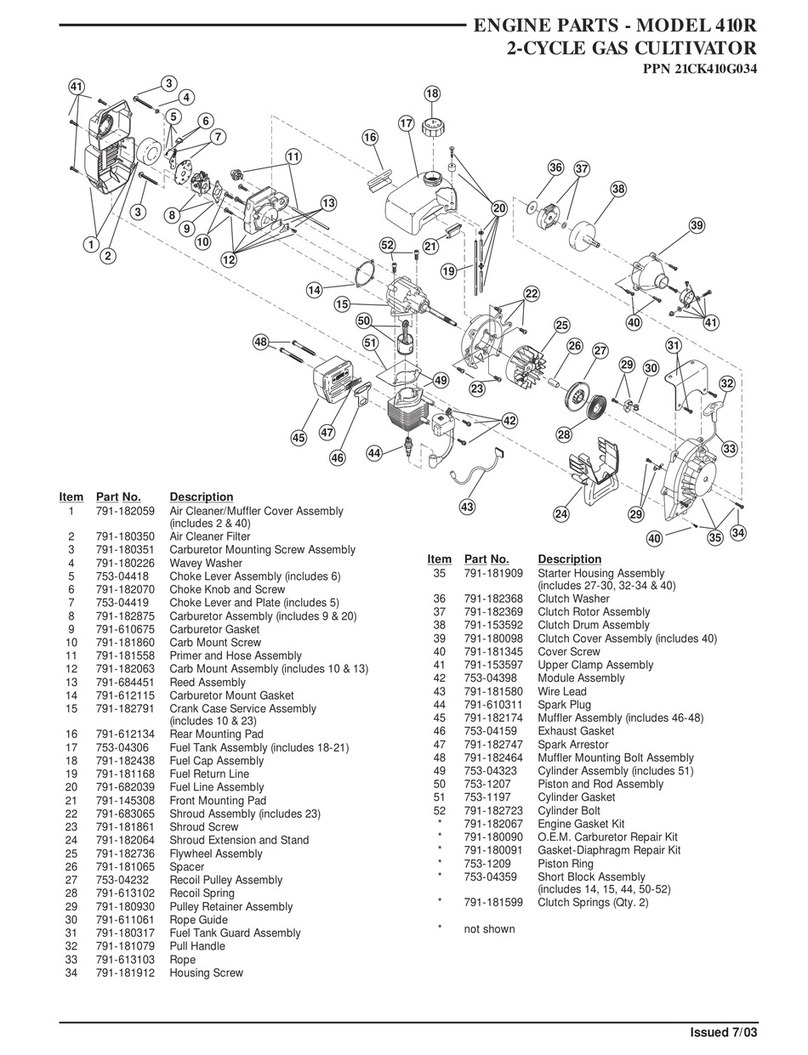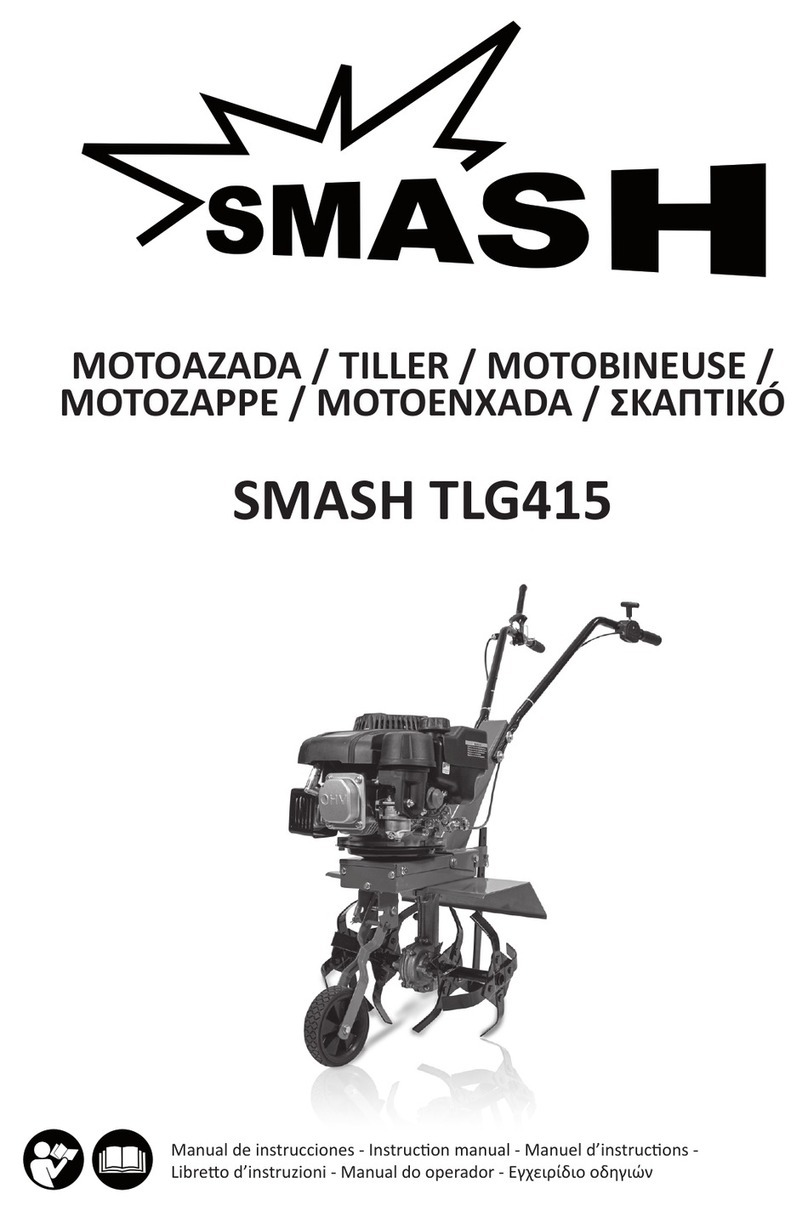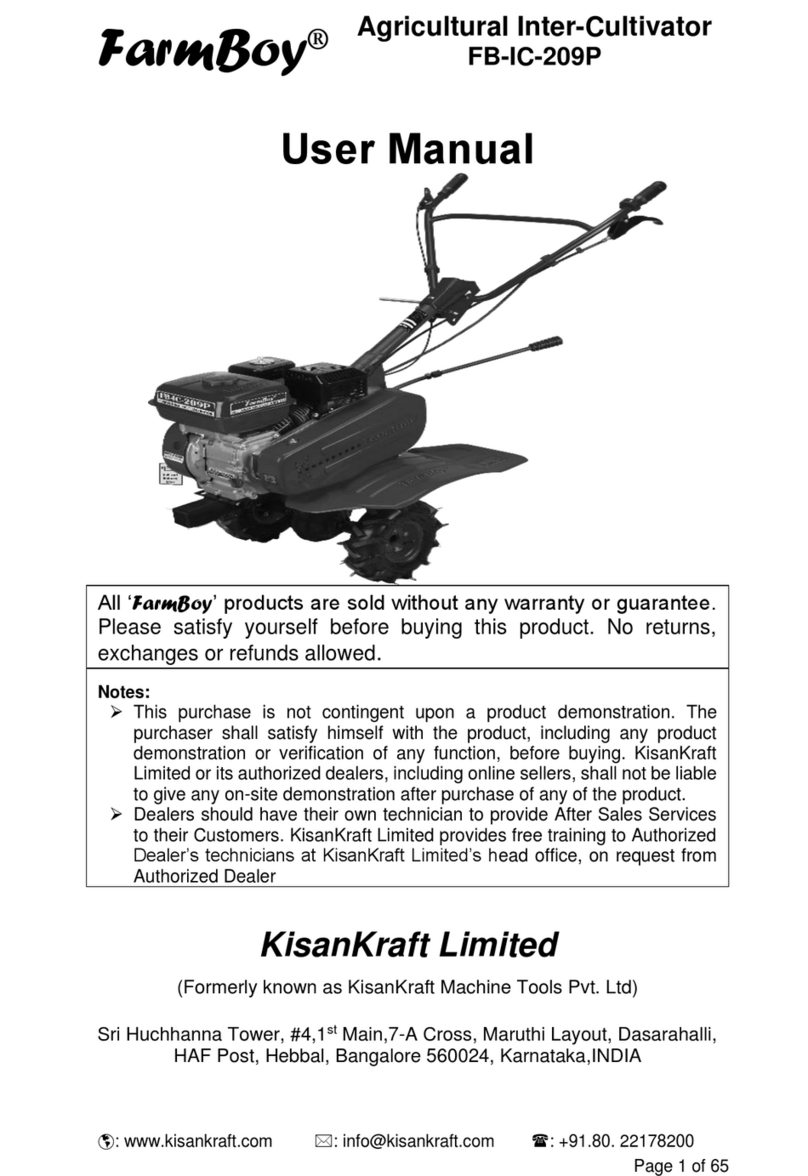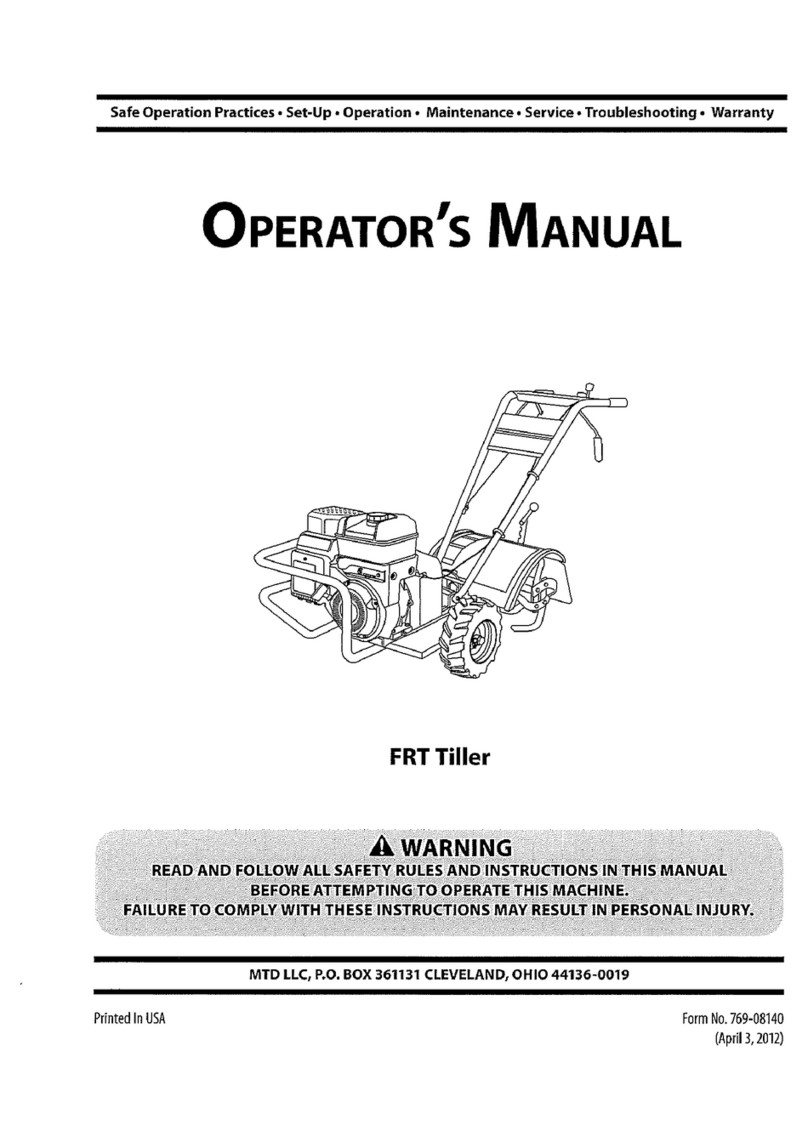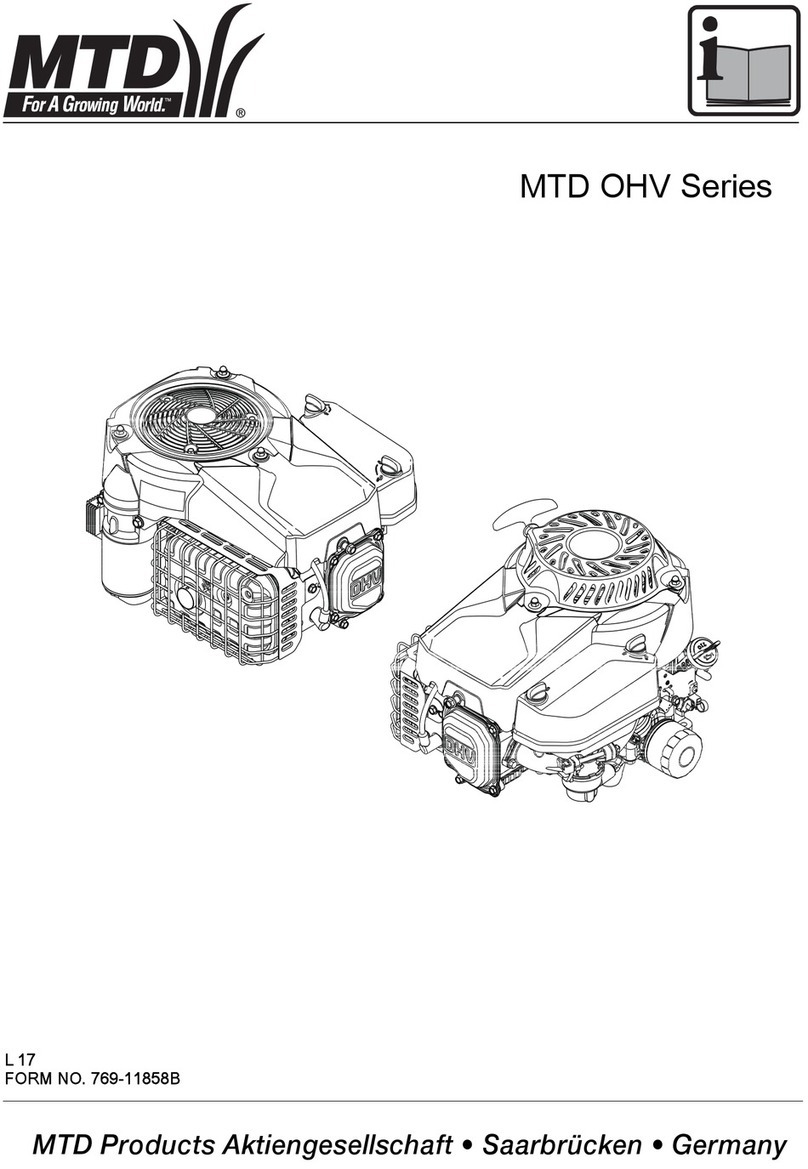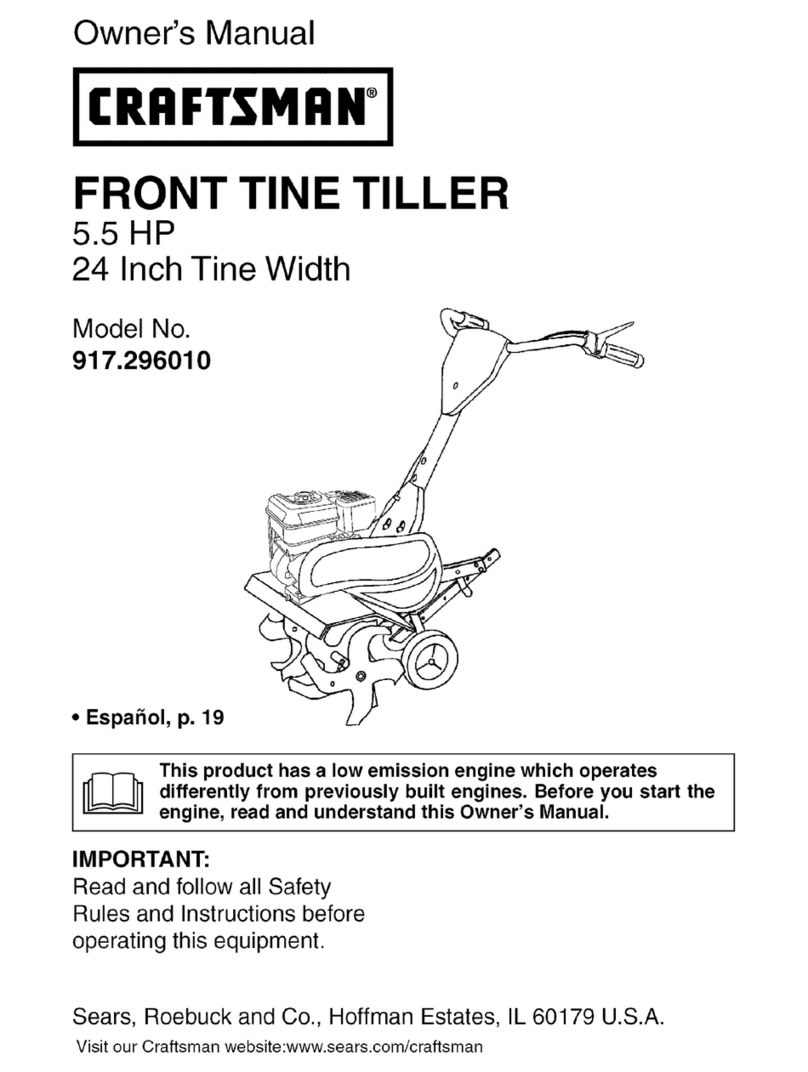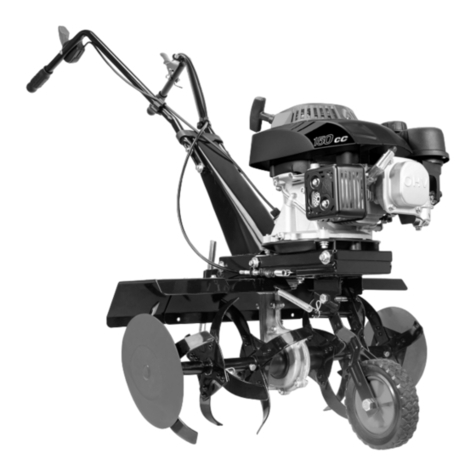Section1: Safety
7. Takeall possible precautionswhen
leavingthe machine unattended.Stopthe
engine. Disconnectspark plug wire and
move it awayfrom the spark plug. Be
sure both wheels are in the WheelDrive
position.
8. Beforecleaning, repairing, or inspect-
ing,stop the engineand makecertain all
moving parts havestopped. Disconnect
the spark plug wire and prevent it from
touching the spark plug to prevent acci-
dentalstarting.
9. Theflap on the tine hood must be
down when operating thetiller.
10. Never usethe tiller unless proper
guards, plates,or other safety protective
devicesare in place.
11. Do not run engine in an enclosed
area.Engineexhaustcontains carbon
monoxide gas,a deadlypoisonthat is
odorless,colorless, and tasteless.
12. Keepchildren and pets away.
13. Never operatethetiller under
enginepowerifthewheels are in the
Freewheelposition.In the Freewheel
position,thewheels will not holdthe
tiller backandthe revolvingtines could
propelthetiller rapidly, possibly
causinglossofcontrol.Alwaysengage
the wheelswith thewheel drive pins in
the WheelDrive position beforestarting
the engine or engagingthetines/wheels
with the Forward Clutch Bail or the
ReverseClutchControl.
14. Beawarethat the tiller may unexpect-
edly bounce upwardor jump backward
and be propelled toward you if the tines
shouldstrike extremely hard packedsoil,
frozen ground, or buried obstacles like
largestones, roots, or stumps. If in doubt
about thetilling conditions, always use
the following operating precautionsto
assist you in maintaining control of the
tiller:
a. Walk behindand toone sideofthe
tiller, usingone handon thehan-
dlebars. Relaxyourarm, butusea
securehandgrip.
b. Usea deepdepthregulator
setting.
c. Useslowerengine speeds.
d. Clearthetilling area ofall large
stones,rootsandotherdebris.
e. Avoidusingdownwardpressure
on handlebars.If needbe, use
slightupwardpressuretokeepthe
tinesfrom diggingtoodeeply.
f. Beforecontactinghardpackedsoil
at the endofa row, reduceengine
speedand lift handlebarstoraise
tinesout ofthesoil.
g. In anemergency,stoptinesand
wheelsbyreleasingwhichever
clutchcontrolisengaged. Donot
attemptto restrainthetiller.
15. Do not overloadthetiller's capacity
by attempting to till too deeplyat too fast
a rate.
16. Neveroperatethetiller at high
transport speedson slippery surfaces.
Look behind and usegreat carewhen
backing up.
17. Do not operatethe tiller on aslope
that istoo steepfor safety.When on
slopes, slow down and makesureyou
havegood footing. Never permit the tiller
to freewheeldown slopes.
18. Neverallow bystanders nearthe unit.
19. Onlyuseattachments and acces-
sories that areapproved bythe manufac-
turer ofthe tiller.
20. Usetiller attachments and acces-
sories when recommended.
21. Neveroperatethetiller without good
visibility or light.
22. Neveroperatethetiller if youare
tired, or under the influence of alcohol,
drugs or medication.
23. Operatorsshall not tamper with the
engine-governorsettings on the machine;
the governor controls the maximum safe
operating speedto protect the engineand
all moving parts from damagecausedby
overspeed. Authorized serviceshall be
sought if a problem exists.
24. Do nottouch engineparts which may
be hot from operation. Let parts cool
down sufficiently.
25. Pleaseremember:You can always
stop the tines and wheels by releasingthe
Forward Clutchcontrol or the Reverse
Clutchcontrol (whichevercontrol you
haveengaged),or by moving the throttle
control leveron the engineto "OFF"or
"STOP".
26. To load or unload thetiller, seethe
instructions in Section4 of this Manual.
27. Useextremecaution when reversing
or pulling the machinetowards you.
28. Start the enginecarefully according to
instructions and with feet well awayfrom
the tines.
29. Neverpick up or carry a machine
whilethe engine is running.
MaintenanceandStorage
1. Keepthe tiller, attachments and acces-
sories in safeworking condition.
2. Checkall nuts, bolts, and screws at
frequent intervalsfor proper tightness to
besure the equipment is in safeworking
condition.
3. Neverstore the tiller with fuel in the
fuel tank insidea building where ignition
sourcesare present such as hot water
andspace heaters,furnaces, clothes
dryers, stoves,electric motors, etc.).
Allow engineto cool beforestoring in any
enclosure.
4. To reducethe chancesofa fire hazard,
keepthe enginefree of grass, leaves,or
excessivegrease.
5. Storegasoline in a cool, well-ventilated
area,safelyaway from any spark- or
flame-producing equipment. Store
gasolinein anapproved container,safely
awayfrom the reachof children.
6. Referto the Maintenancesections of
this Manualandthe separate Engine
Owner's Manualfor instructions if the
tiller isto be stored for an extended
period.
7. Neverperform maintenancewhile the
engine is running or the spark plug wire
is connected,exceptwhen specifically
instructed to do so.
8. If the fuel tank hasto be drained,do
this outdoors.
